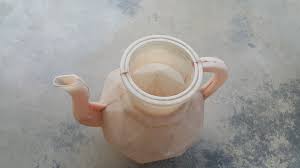As Australia grapples with an ongoing toilet paper crisis, fears are growing of a worst-case scenario: Our supermarkets completely run out of rolls.
Given most of our toilet paper is made by reliable suppliers in South Australia, this outcome is very unlikely to happen.
But as the coronavirus claims more lives around the world, people are desperate to make sure they have enough back-up supply in case they get infected.
Before we panic even more, let’s all take a deep breath and remind ourselves that most people around the world manage just fine without it.
There is no doubt that Australians – along with most people in Western countries like the United Kingdom or Canada – are ride-or-die toilet paper users.
Going camping? Pack some toilet paper.
Music festival? Better take an emergency roll.
Backpacking? You never know when you’ll need to go.
Heated debates between scrunchers and folders, or fights over the correct way to hang the toilet roll, have long divided our great nation.
It’s no wonder, then, that as the coronavirus spreads, Australians are scrambling to stockpile enormous amounts of emergency toilet paper to last them through a period of self-quarantine.
But maybe it’s time to get out of our comfort zone and look for another way.
After all, about four billion people – more than 70 per cent of the world’s population – don’t use it.
So what are our alternatives?
Use a bidet
The French got this one right.
Believed to have been invented in France in the early 1700s, a bidet is a type of sink next to the toilet in the bathroom.
After you’ve done your business on the toilet, move over and sit on the bidet.
Turn on the tap, adjust the temperature and let the warm water jets gently blast your bum.
Delightful and a lot more effective than toilet paper.
The only problem is bidets haven’t exactly caught on in Australia yet.
Use a bidet shower
A bidet shower, affectionately dubbed a ‘bum gun’, is a hand-held triggered nozzle located near the toilet.
It delivers a steady spray of water that you can guide over your derrière while you’re still seated.
Genius – and cheaper to install than a full-blown bidet.
Use a tabo
The tabo (pronounced TAH-boh) is a traditional Filipino hygiene tool.
Like us and toilet paper, most Filipinos can’t imagine doing a Number Two without it.
Similar to ‘dippers’ used in other South-East Asian countries, the tabo is a small, plastic bucket-shaped scoop with a handle.
It usually comes with a ‘timba’, a large plastic bucket that is filled with water.
The tabo and timba are kept in the bathroom.
After you’ve used the toilet, scoop up some water with the tabo and slowly pour it over your backside again and again until you feel clean.
Some people use soap and water with their free hand to rub into those hard-to-reach places.
Use a lota
A lota is a small water vessel made of brass, copper or plastic.
It is mainly used in south Asia and Muslim-majority countries like Indonesia and Pakistan.
With your right hand, take the water-filled lota and point the spout near your bum.
Lean forward so the water starts to flow steadily.
Once the water is flowing, use your left hand to wash around until you’re nice and clean.
Use a gompf stick … if you dare
Long before toilet paper was invented in the 1850s, people used a nifty tool called a gompf stick.
Also called a sponge stick, gompf sticks are basically just a sponge on a stick that is used to clear away excess poo.
It is placed in a tub of salt water and is shared by multiple people.
Plenty of different versions were used throughout history.
It is believed the Vikings used gompf sticks made of sheep’s wool, while the wealthy French used a fancy version made of lace, wool and hemp.
In the Middle Ages, most of them were made from hay balls. Ouch.

